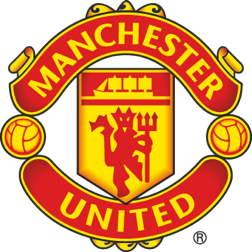The long and winding road
“I’ve been through hell and back over the last couple of years.” Condensed to a dozen words scattered across little more than three seconds, Phil Jones’s delivery belied the severity of his sentiment.
Professional footballers find their vocation extraordinarily early in life. Marcus Rashford, for instance, is paid to play football in a Manchester United shirt, a professional extension of something the 24-year-old has been doing since he was seven. That’s 70 per cent of his life on one career path, with increasing responsibility; common among most kids who rise through their club’s ranks to first-team level. Few livelihoods are crystallised and imprinted on an individual’s identity so young.
Future barristers don’t prepare mock case notes before they leave primary school, just as tomorrow’s medical professionals don’t define themselves as doctors, nurses or surgeons before hitting puberty. Footballers’ lives grow around football during their formative years. As such, any instances of injury or illness invariably give rise to intense consternation and, should those issues linger over sustained periods of time, the impact can be considerable.
Jones opens up about his fight against injury
Phil Jones talks about his lengthy lay-off during his UTD Podcast appearance...
As the 30-year-old explained to UTD Podcast last September, that enforced hiatus was a gruelling chapter in his story. “I think as a footballer, as a person, as a human being, that’s the lowest I probably ever felt in my life,” he admitted. “You try to get a balance between football and family life, but it was so difficult going home and trying to look after the kids. You’re there, but you’re not there, you’re not present.”
At this point, it’s worth remembering that Jones turned his back on social media years earlier after suffering hurtful criticism which spilled over into real-world heckling. One confrontation ended with an individual telling the United defender, who was walking through Hale with his two young daughters, that he was “s***”. Despite the inevitable anger and pain of such moments, Phil nevertheless identifies rehab as his lowest point.
‘Rehab’ is one of the most chilling words in a footballer’s vernacular. During rehab, time mutates. It stands still for the absent player, but seemingly quickens around them. The team moves on without them as the individual’s absence translates into opportunities for replacements. Youngsters come up through the ranks or new recruits arrive, all the while honing their fitness and craft while the absent party can only watch on helplessly.
As the bigger picture evolves around them – without them – this gives rise to worry. Worry, not only of being replaced, but of being forgotten, of being perceived as tainted, of losing their identity.
Hence, players will often push themselves through the rehab process in order to return to action quickly.
“It becomes a cycle,” ex-Reds striker Louis Saha told UTD Unscripted, reliving the recurring injury issues that plagued his time at Old Trafford.
“You come back early because you’re eager, you want to get your spot back, you want to have your chance, because you know that if others are coming in and scoring goals, you may end up being transferred. So I was always rushing to come back. I felt like I was compensating every time. It was really difficult. Every time I came back, I managed to come back quite quickly, then I was out for a few weeks, in and out like that.”
UTD Unscripted: An unfinished story
ArticleDespite the bumps in the road, Louis Saha explains why he feels fortune for his time as a Red.
There is also the threat of returning a different player altogether. Alan Smith, an all-action striker when he arrived at Old Trafford, was midway through his second term at the club when he suffered a career-changing injury at Anfield. Awkwardly blocking a free-kick broke his fibula and tibia while also, most devastatingly of all, dislocating his ankle. “It was something I had to come to terms with, the fact that I would never get back to the levels I was at previously,” he conceded, looking back on his 13 months on the sidelines.
“I ended up with 50, maybe 60 per cent movement in my ankle compared to what it should have been. I knew I’d never get back to the levels I was at previously.
You come back [playing], you’re on a high, you’re flying on adrenaline, but when you go home at night, you’re thinking: ‘This is not how I was before.’ Everything’s so much more difficult to do, even the simple stuff. Striking the ball with my left foot, I couldn’t really do it. You’ve got no power in it, no confidence in it. “You can’t do the stuff you want to do, and you start thinking: ‘I’m miles off, here.’
There’s that horrible realisation that if you’re one per cent off it at Man United, you’re probably gone. If you’re 10, 12, 15 per cent off it, which I was, you’re in a different world.”
Smith recuperated to the point that he was able to continue at Premier League level with Newcastle United for another five years, ultimately mustering 11 more years as a professional after his departure from Old Trafford. But, while the fiery Yorkshireman was able to salvage his career despite his injury ordeal, every player entering rehab for serious injury courts the risk that the process may not even resemble a happy ending.
“I came to Manchester United to help win the Champions League,” recalled Owen Hargreaves, whose dream start to life as a Red soon turned into a nightmare. “We were able to do that, I was able to play a big part, play 34 games and after the treatment I had in the summer [of 2008], I virtually never played again. For any young player to be 27, be at that point in your career, having so many highs, being central to United’s plans and England’s plans, and then virtually never play again and try to deal with all of that, was very, very difficult. I wouldn’t wish it on my worst enemy.”
UTD Unscripted: The power of courage
ArticleUnited's former strength and conditioning coach Mick Clegg recalls Darren Fletcher's brave return to football in 2013.
“The journey of a thousand miles begins with a single step,” noted Chinese philosopher Lao Tzu who, presumably, never went through months of painstaking rehab, broke down and had to start the process all over again.
When that journey comes full circle and keeps retracing that same step, it’s impossible not to become disheartened. Ole Gunnar Solskjaer, for instance, had five months on the sidelines to cure a knee injury, followed by surgery and a year out, topped off by another setback which put him out a further five months, then four more honing his fitness in the Reserves.
The mental fortitude required to go through almost three years – post-30, incidentally – with hardly any contact with a football, is indescribable. All the sacrifice of rehab exercises, then gym work, topped off with optimal nutrition, rest and recovery time, becomes Groundhog Day, less the humour.
The life of a sportsman, minus the sport, is life on a treadmill. All that effort to go nowhere. Targets are priceless during rehab, the more emotionally involved, the better. For Solskjaer, it was simple. “I wanted to play at Old Trafford in front of my son,” explained the Norwegian.
“I wanted to be playing so that he could remember his dad as a professional footballer, and obviously I wanted to win so that he could remember me as a winner. I wanted him to at least remember me out on the pitch, winning. That would be going through my head when I was in the gym.”
UTD Unscripted: I had to fill that empty chair
ArticleRead the fascinating story behind Ruud van Nistelrooy's protracted transfer to Old Trafford in our latest long read.
For fellow striker Ruud van Nistelrooy, the rehab journey was shorter, clocking at less than a year to rebuild a collapsed knee, but his inspiration was simply beginning his United career, rather than resuming it.
Having sustained the injury while a proposed transfer to Old Trafford was on hold, the Dutchman had surgery in Colorado and began his rehab in Eindhoven, but his mind was only ever in Manchester.
“From the very start of it all, I was working towards one thing: being a United player,” he said. “It was a constant drive. Every single day that I got up, it was my motivation. If I was going to go back, then I needed a good knee for that. I didn’t leave anything to chance. I used all the time that I had to work on my knee and my physique at the same time. I wanted to look at it as almost a year out to prepare, where I could invest in myself, in my physique and to use it to come back stronger.
“I did a lot of total body work – upper body, legs, core – because if you’re strong and quick in your legs, and you can use your upper body as well for extra strength, it’s a good combination. I think that total approach paid off. The rehab went perfectly. Looking back now, I scored 80 of my 150 goals for United in my first two years at the club, and that was all because of the time that I put in during my rehab.”
'The Long and Winding Road' was first published in March's Inside United. You can find the latest edition of our monthly magazine, available to buy online, here.




